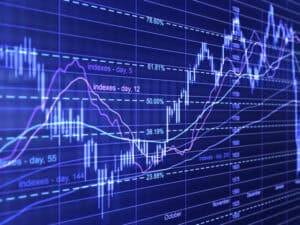Warren Buffett has long extolled the value of cash. Buffett’s biographer stated that he doesn’t view cash as an asset without value, but instead as an option that can be used to purchase assets when they become undervalued. While there is an opportunity cost of holding cash (especially in a low interest rate environment), the ability to use it to buy assets on the cheap when they sell off can greatly offset this opportunity cost.
Warren Buffett’s actions speak loudly in this regard—in Q2 2016, Buffett was holding $72 billion in cash. This is the most cash Buffett has had on hand in his entire 40 years as the CEO of his firm Berkshire Hathaway. Holding this amount of cash is not a one-time affair for Buffett, and since early 2014 Buffett has had more than $50 billion of cash on hand. This is a fairly large amount.
In Q2 2016, Buffett’s total U.S. investment portfolio was worth $130 billion, meaning Buffett is keeping himself hugely underinvested. The reason for why likely has to do with his outlook of cash as an option. Buffett is likely waiting patiently for asset values to come down (as they did in 2008), and at these times cash can become incredibly valuable. Investors who had plenty of cash to deploy in 2008-2009 would have seen massive returns.
While cash has value as an option, cash also has another important use—it can serve as protection during major market downturns. Today, both U.S. and Canadian markets are looking extremely expensive, and rather than chase overvalued names, investors can increase their cash weighting to protect themselves from downside and to capitalize on it to purchase names at a discount.
Canadian and U.S. markets are expensive
It is important not to look at the TSX in isolation. Over time, both the TSX and S&P 500 have been strongly correlated (a relationship that can be seen by simply comparing the long-term charts of both indices on a platform like Yahoo Finance). Starting with Canada, Blackrock’s mid-year 2016 report found that out of 17 global stock markets, Canada was the second-most expensive. This was calculated by comparing valuations to their long-term historical average.
The strong point of Blackrock’s analysis is they used several valuation measures to determine value (including earnings yield, price to cash flow, dividend yield, and others). The TSX’s 10-year average trailing price-to-earnings (P/E) ratio is 17.9; currently, the TSX is trading at a trailing P/E ratio of 19.75. This puts the TSX a fair amount above average.
These valuations are concerning, considering the growth outlook for the Canadian economy is not significantly stronger than it has been in the past. In fact, the OECD just cut the growth forecast for the Canadian economy for both 2016 and 2017. With an overvalued real estate market and record household debt levels, the environment for corporate earnings growth is not strong.
Things are even worse in the United States. In Blackrock’s report, the S&P 500 was the most expensive market in the world by a fairly large margin. In July, Goldman Sachs stated that the U.S. S&P 500 was more expensive than it had been in 88% of its history, and its forward P/E ratio had increased by 75% since 2011. Historically, this much P/E growth has always resulted in crashes, according to Goldman.
Gold could be a good cash alternative
Investors who have trouble holding higher levels of cash could use gold equities as a substitute. Many analysts see gold as being in the early stages of a bull market, and gold prices typically improve as stock prices do poorly.
Barrick Gold Corp. (TSX:ABX)(NYSE:ABX) is an excellent name to own in this regard thanks to its declining debt levels, good production growth outlook, and focus on high-quality deposits. Barrick has pulled back recently, making this a solid time to buy.








